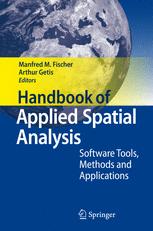

Most ebook files are in PDF format, so you can easily read them using various software such as Foxit Reader or directly on the Google Chrome browser.
Some ebook files are released by publishers in other formats such as .awz, .mobi, .epub, .fb2, etc. You may need to install specific software to read these formats on mobile/PC, such as Calibre.
Please read the tutorial at this link: https://ebookbell.com/faq
We offer FREE conversion to the popular formats you request; however, this may take some time. Therefore, right after payment, please email us, and we will try to provide the service as quickly as possible.
For some exceptional file formats or broken links (if any), please refrain from opening any disputes. Instead, email us first, and we will try to assist within a maximum of 6 hours.
EbookBell Team

4.7
76 reviewsSpatial data are an important source of scientific information. The development of high capacity and fast desk and laptop computers and the concomitant creation of geographic information systems has made it possible to explore georeferenced or mapped data as never before. This Handbook summarizes, explains, and demonstrates the nature of current models, methods, and techniques particularly designed for the analysis of spatial data. The book is designed to be a desk reference for all researchers just getting into the field of spatial data analysis as well as for seasoned spatial analysts. Relevant references are given whenever possible to direct researchers to the most useful writings on the subject.
Unlike most compendia of this nature, the book starts out by exploring the available software for spatial analysis. We focus on the tools that make analysis possible. The volume then describes briefly but clearly the many techniques embodied in the fields of exploratory spatial data analysis, spatial statistics, geostatistics, and spatial econometrics. In addition, attention is given to the methods used for the analysis of remotely sensed data. Finally, a number of example sections are included that demonstrate the application of spatial analysis in the economic, environmental, and health sciences. The wide range of approaches described helps readers better understand their data and the techniques needed for spatial analysis.
The volume features contributions from the very best scholars in the field. Their explanations are able to communicate the fundamental ideas of their subject area succinctly and accessibly.